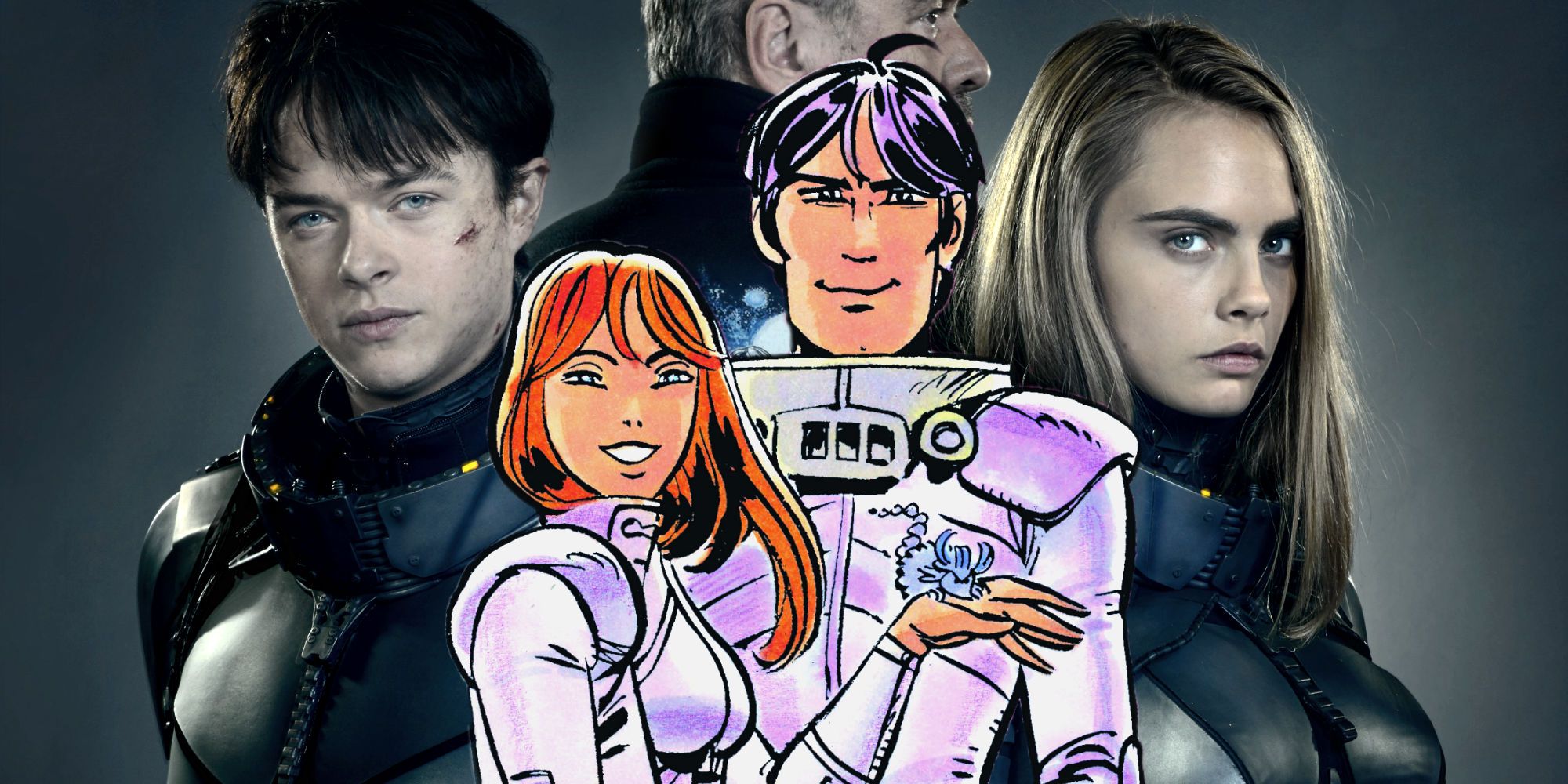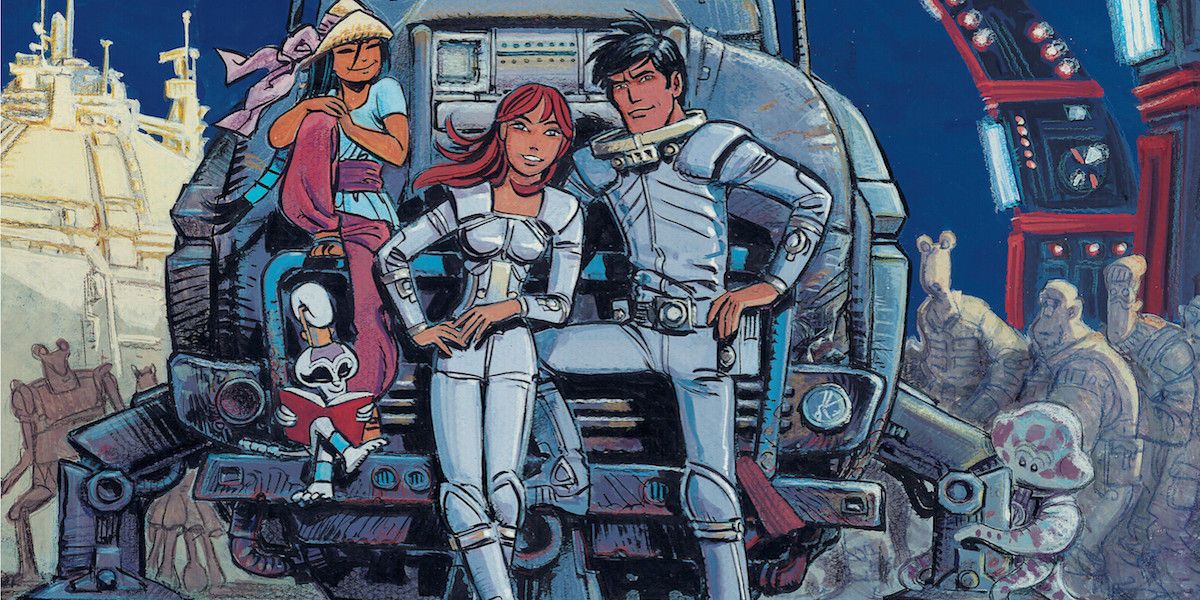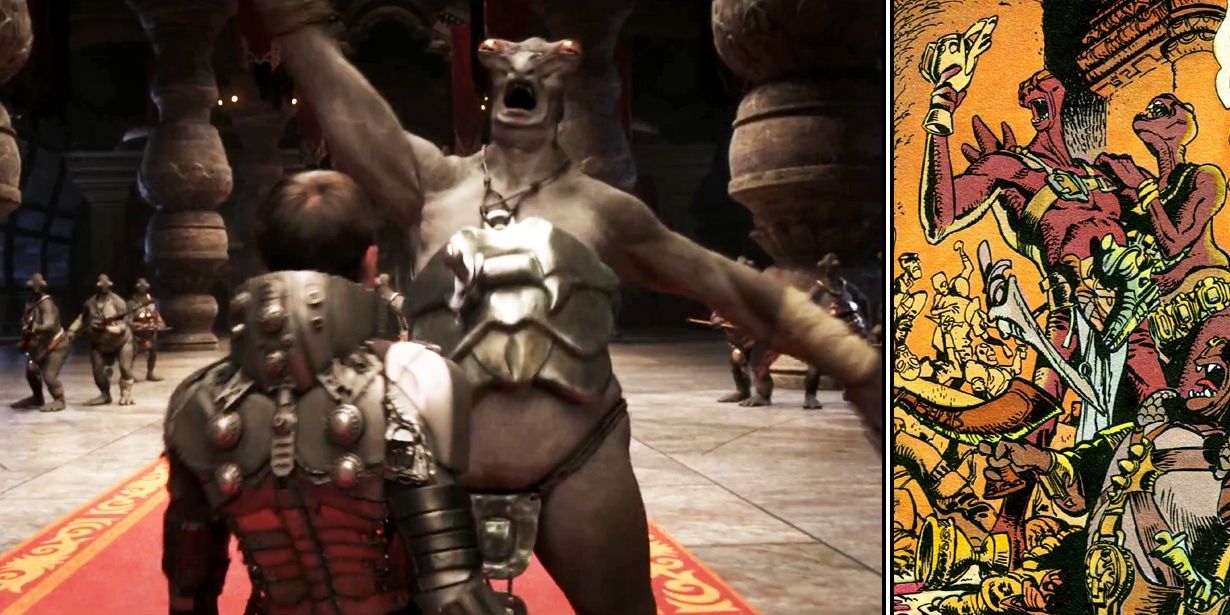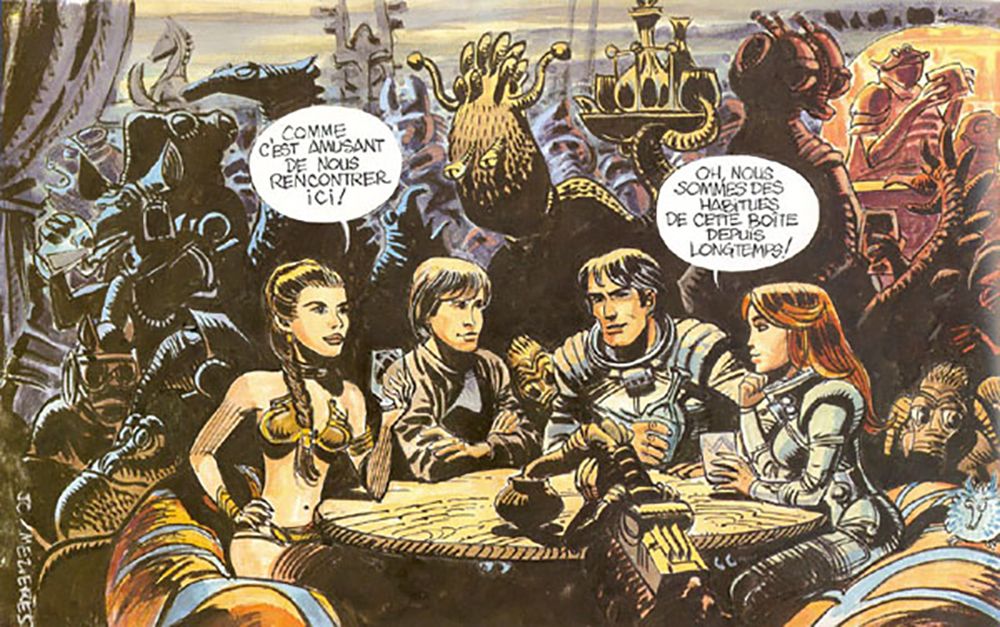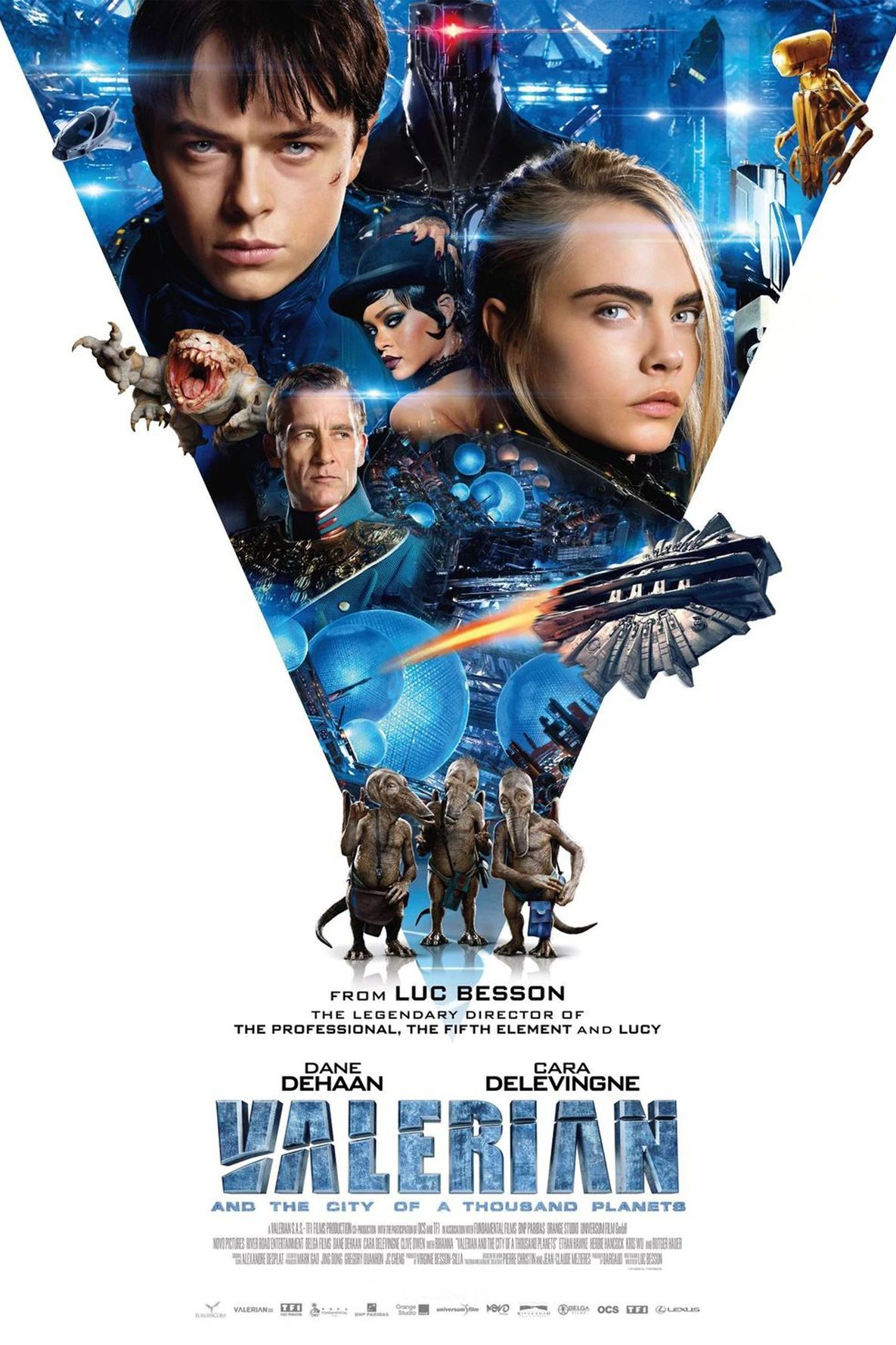The first trailer for Luc Besson's Valerian and the City of a Thousand Planets offered a fascinating look at the movie's heroes and the larger world they exist in. The trailer also pointed out that Valerian is based on a "groundbreaking graphic novel", which some viewers may be surprised to learn. That's right: Valerian is actually based on an award-winning French comic series called Valérian (and later Valérian: Spatio-Temporal Agent and the more commonly-known Valérian and Laureline) by Pierre Christin and Jean-Claude Mézières.
First published in 1967, Valérian tells the story of (you guessed it) a Spatio-Temporal Agent named Valerian and his partner Laureline. If you can't tell from the job title, this means that time travel is involved. Specifically, Valerian and Laureline are tasked with stopping rogue time travelers from taking actions that result in paradoxes, and the comics show how dangerous a paradox can be -driving home just how vital the work they do really is.
Valérian and Laureline wasn't just a sci-fi adventure comic, however. During its 52 years it touched on a number of political and social topics from the viewpoint of a pair of time travelers working for a 28th-century agency. The series has been collected into a number of volumes, translated into other languages and ranked as one of the top 5 most influential French comics of all time. It inspired generations of creators, and is right up there with works like the John Carter series in shaping modern science fiction. It was even adapted into an anime series titled Time Jam: Valerian & Laureline that ran for 40 episodes.
Who Are Valerian and Laureline?
Valerian is your typical hero: loyal to a fault and not afraid to fight his way out of a mess. He was born in the Terran Galactic Empire capital of Galaxity, on Earth, in the 28th century. His loyalty to the Empire is extreme, trumping even his own morals, which leads him to almost kill himself at one point in the series. He was chronically late early on in the series, especially when summoned by his boss, but was otherwise very dependable. He was definitely the star of the series early on, though that didn't last.
As the comic progressed, Valerian's character changed a bit. He seemed a bit dumber at times, and was more prone to do disruptive things like get drunk while on missions or mess around with other women. The perception that others have of him seems to change as well, with his "hero" status being replaced with him more being a blunt object that others can use as cannon fodder against real warriors. Fortunately, he's at his best with Laureline by his side and she helps him to make up for his shortcomings.
Unlike Valerian, Laureline was born in the past and was recruited after saving Valerian's life in the year 1000. She demanded that he bring her back to the future with him, which he did (though in the anime, this resulted in the disappearance of Earth and left the pair as the only humans left in the universe). Given the time period that she hailed from, she started out as little more than a background character; she travelled with Valerian, but didn't do much to step out from under his shadow. When the two become separated during an adventure, however, she fully comes into her own as his equal. Much as Valerian becomes a bit dumbed down and boorish, Laureline becomes more ambitious and outgoing as the series continues.
Attractive, intelligent and a bit of a rebel, Laureline learns to yield her sex appeal as a weapon to get information or manipulate others into doing what she and Valerian need. She also becomes the moral center of the group, questioning whether some of their jobs are the right thing to do in a way that Valerian never would on his own. As the series progressed, she became the star and it was Valerian who was left in her shadow.
The Universe According to Valérian and Laureline
There are a number of alien races in Valérian and Laureline, including the capitalist, alcohol-loving Shingouz, the humanoid Shadows and the living stones known as the Woloch that wanted to destroy all organic life in the galaxy. There are human characters as well, including recurring characters such as the somewhat timid and hedonistic Mr. Albert (Galaxity's contact in the 20th century).
The Earth is drastically different after an atomic bomb melted the ice caps in the 1980s, which is why the futuristic city of Galaxity is the home of the Empire instead of an existing Earth city. It's later discovered that the Earth is actually owned by an alien family from the world of Hypsis, which we've known as God; he had hoped to edge Earth along its development to the point that it would start returning a profit, but because of its imperialist tendencies he had to destroy Galaxity to try and get things back on course. Valerian and Laureline traveled throughout space and time, finding new adventures and sometimes facing hard choices along the way.
Valérian and Laureline wasn't just a generic sci-fi comic. Laureline's character was based on the feminism movement of the 1960s, making her an early strong female character in comics, and Valerian's "classic hero" was shown more and more to be out of place in the world. When Galaxity disappears and there's no one left to give orders, Valerian finds himself all but unable to function at first and considers simply ending it all. The characters developed and grew, and eventually found their place in this new universe where they had to do more than just follow orders that came down from above. The creators weren't afraid to touch on topics such as liberal politics, religion and other things that were seen as controversial at the time, and in the end it was a stronger comic for it.
Valerian's Legacy
Valérian and Laureline had a significant impact on the science fiction genre that can still be seen to this day. In addition to influencing several comics and comic artists, its influence can also be seen in media such as film as well. Conan the Barbarian and Independence Day both had design elements that seemed quite similar to worlds or technology seen in Valérian and Laureline, and the Star Wars saga seemed to borrow a number of elements from the comics. Even iconic Star Wars aspects such as the design of the Millennium Falcon, Han Solo being frozen in carbonite, Darth Vader's general look (including the burns he suffered as Anakin) and even Leia's gold bikini bore strong similarities to things that had appeared in Valérian and Laureline years before. This led to Mézières creating a scene in which Luke and Leia meet Valerian and Laureline, and when Leia remarks that they look familiar Laureline explains that they'd been there for a long time.
Besson's The Fifth Element also drew inspiration from Valérian and Laureline, though this was with the creator's blessing; Mézières did concept art for the film, and provided input into the story that changed Bruce Willis' Korben Dallas from a factory worker to a taxi cab driver. Other elements of the story were also similar to plots seen in Valérian and Laureline, though Besson claims that he came up with the ideas for those elements when he was a teenager (which would have them predate the items appearing in the comics). Besson openly admits that he's a fan of the comics, however, and that love for the source material is what's driven Valerian and the City of a Thousand Planets to get made.

